The Fisher
Model E-49 Electra VII
Restoration

| This project came out of an old console piece that was once a fine piece of furniture. As with many electronics these days, there was a need to miniturize so we are rebuilding this for a smaller cabinet. Unfortunately, it was powered on before checking anything, and one of the output tubes was shorted, which in turn took out the output transformer along with a couple other components. To make a long story short, I located a replacement transformer from a chassis found on eBay. For info on why you shouldn't power up older equipment that hasn't been used for a long time, and what I do to prevent catastrophic failures, read this. | 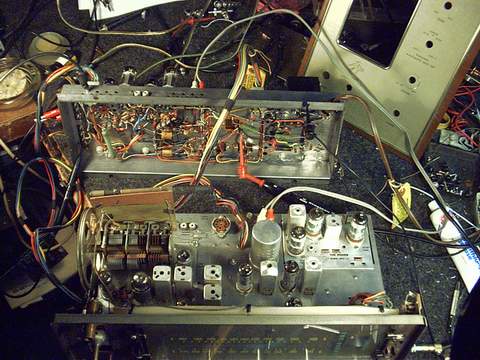 Initial Testing |
The receiver chassis is a model 590T with a MPX-65 FM multiplexer, and the amplifier chassis model 481A. Tube Layout The parts chassis I found was a model 480A, but the only difference I could find is the umbilical cord connector for the receiver-to-amp harness has fewer wires. In the process of hunting down the T812-217-3D transformer, I did determine the turns ratio of the transformer is 27:1 which gives it an impedance ratio of 729:1. The original three-way speaker system (according to the schematic) was 8 ohms, this would present an impedance of 5.8K to the EL84s.
Testing all the caps on my Sprague Capacitor Analyzer showed them all to be out of tolerance so I replaced them all. Including the power supply filters. (See further down)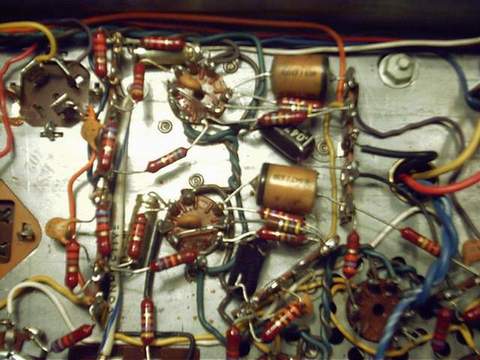 |
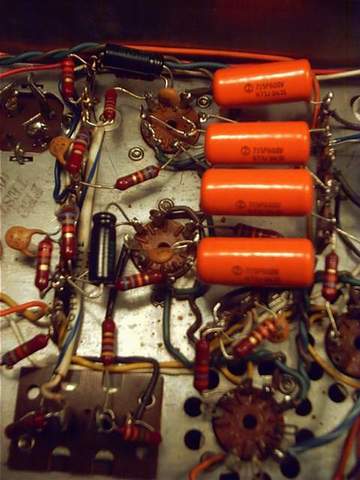 |
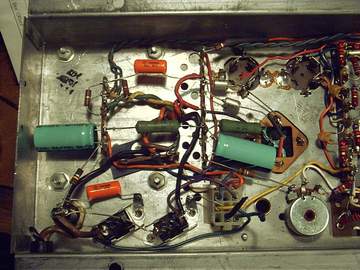 |
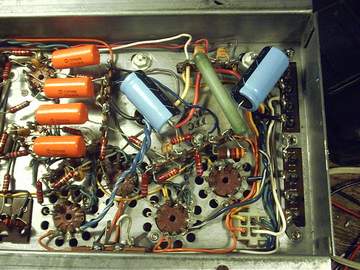 |
The main HV filter was entirely dried out.
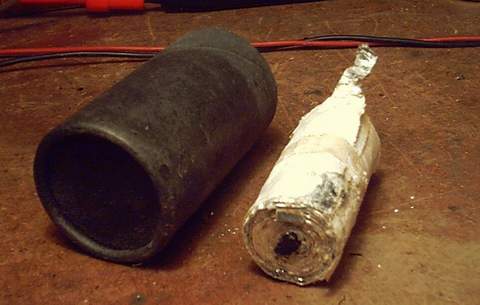
So after a new troop of push-pull valves...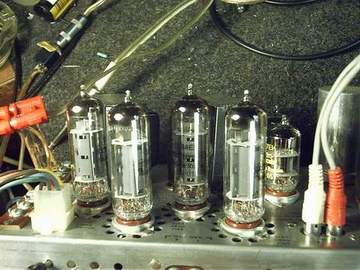 |
...there was some reason why I couldn't get a good signal through them. 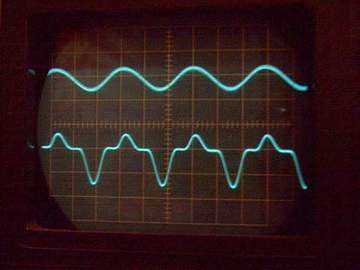 |
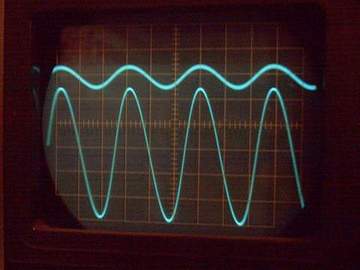 They began singing like angels |
After realizing the heaters on the phono input tubes I removed and rewired (this will never be used with a phonograph again) were in series as a common-cathode resistor for the finals... ...I added a reststor where they used to be, and... |

| Frequency sweep of 1000 hz to 5000 hz (I call this my 'Elephant' test.) |
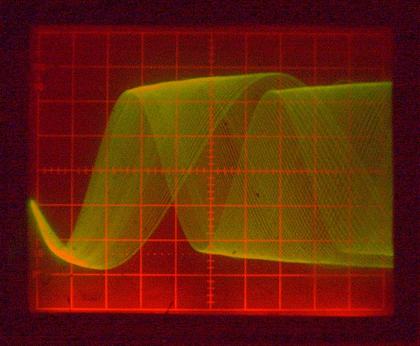 |
 |
As I was attempting to adjust the ratio detector, I noticed the secondary slug was difficult to turn. Upon further inspection the ferrite slug had cracked. I was reminded why I pilfer so much stuff from old radios...had one! It was much easier to align with a fresh slug. |